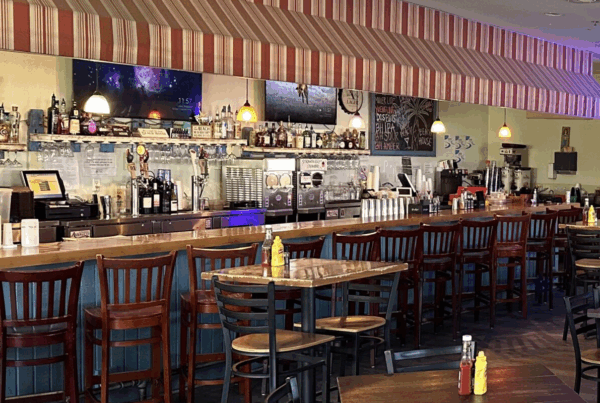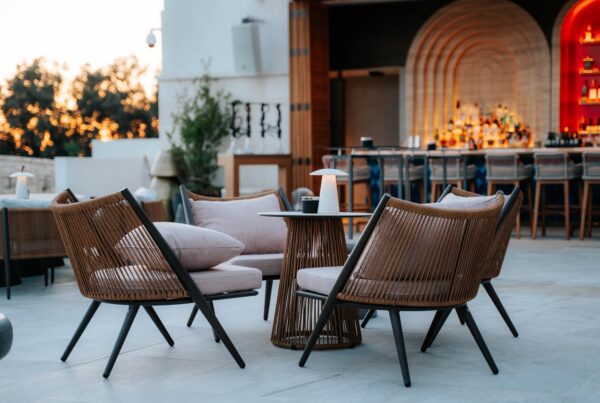Renovating a restaurant is an exciting project that can breathe new life into your business, but it also comes with its own set of challenges. While most restaurant owners focus on the aesthetics, layout, and overall design, there’s one essential aspect that often gets overlooked—plumbing. Plumbing plays a critical role in the day-to-day functioning of your restaurant, affecting everything from water supply to drainage. Updating your plumbing during a renovation might not be the most glamorous part of the process, but it’s one of the most important steps to ensure the long-term success and efficiency of your restaurant.
When you begin a renovation, you may be surprised by some of the hidden plumbing issues that can arise. These problems can impact your ability to operate smoothly and may end up costing you more money in the long run if not addressed properly.
Why You Should Update Your Plumbing
Over time, plumbing systems can deteriorate due to age, wear and tear, or simply because they were never built to handle the demands of a busy restaurant. While it might be tempting to put off plumbing updates in favor of more visible or trendy renovations, failing to upgrade your plumbing can lead to a variety of costly issues down the road.
Restaurants have unique plumbing needs compared to other types of commercial buildings. With multiple sinks, dishwashers, bathrooms, and possibly even a grease trap or two, the plumbing system must be able to handle a high volume of water use. If your pipes are old, corroded, or improperly sized for the demands of your kitchen and dining area, it can cause serious disruptions to your operations.
One of the biggest benefits of updating your plumbing during a renovation is the opportunity to improve efficiency. Newer plumbing systems are often more water-efficient, helping you cut down on utility costs. Modern plumbing technology, like low-flow faucets, energy-efficient water heaters, and upgraded drainage systems, can make a big difference in reducing your restaurant’s environmental footprint while saving you money in the process. By investing in your plumbing now, you’re setting your restaurant up for smoother operations and fewer headaches in the future.
Common Plumbing Problems Found During Renovations
During a renovation, contractors will likely uncover a variety of plumbing problems. While some issues are more obvious than others, it’s essential to address these problems head-on before they become more significant and expensive. Here are some of the most common plumbing issues that often arise during a restaurant renovation.
Leaking Pipes
One of the most common plumbing problems discovered during renovations is leaking pipes. Old pipes, especially those made from galvanized steel, can develop cracks or rust over time, leading to leaks. Leaks can cause water damage to the structure of your restaurant, which could lead to mold growth, rotting wood, or even electrical hazards. Worse, small leaks are often difficult to detect until they’ve caused significant damage.
Leaking pipes can be especially problematic in the kitchen, where water is constantly used. If left unchecked, a leaky pipe could disrupt food preparation or lead to sanitary issues. Renovations provide an excellent opportunity to replace old, worn-out pipes with newer materials like PEX or copper, which are much less prone to leaks and corrosion.
Inadequate Water Pressure
Another common problem in older restaurants is inadequate water pressure. If your water pressure is too low, it can cause delays in food preparation, cleaning, and general operations. Low water pressure can make washing dishes, sanitizing surfaces, or even using the restroom a frustrating experience for both your staff and customers.
During a renovation, a plumber may identify the root cause of low water pressure, which could range from clogged pipes to a poorly sized water system. If the plumbing system was never designed to handle the high demands of a commercial kitchen, your plumbing may need to be upgraded to accommodate your restaurant’s needs. By addressing water pressure issues early on, you ensure that your restaurant will function efficiently from day one.
Blocked Drains and Grease Buildup
Restaurants are particularly susceptible to clogged drains, especially in the kitchen. Grease, food particles, and soap scum often build up in pipes, leading to blockages. Over time, these blockages can cause slow drains, unpleasant odors, and even complete backups.
When renovating your restaurant, it’s crucial to inspect your drainage system thoroughly. Older restaurants may have out-of-date or undersized drainage systems that can’t keep up with the volume of waste and grease produced by a busy kitchen. A clogged or outdated grease trap, for example, can result in grease accumulation that causes severe clogs and backups. During a renovation, replacing or upgrading your grease trap and cleaning out the drain lines can help prevent these issues and keep everything flowing smoothly.
Outdated Fixtures and Fittings
Over time, plumbing fixtures like faucets, showerheads, and toilets can become worn or outdated. While these issues might not seem like a big deal at first, they can contribute to leaks, inefficiency, or poor water flow. Older fixtures may also be more difficult to repair or replace, making them a hassle for your maintenance team.
By updating your plumbing fixtures during a renovation, you can install more efficient, durable, and modern fixtures that meet your restaurant’s needs. Newer faucets and toilets not only look better but also help you save water, reduce maintenance costs, and improve the overall functionality of your plumbing system.
Corroded or Old Pipes
If your restaurant has old pipes, especially those made from materials like galvanized steel or lead, it’s important to replace them during a renovation. Corroded pipes can lead to leaks, water contamination, and even pipe bursts in extreme cases. Lead pipes are particularly concerning because they can contaminate the water supply with harmful toxins, posing a serious health risk to both your staff and customers.
Replacing outdated or corroded pipes with modern materials like PEX or copper will ensure that your plumbing system is safe, reliable, and up to code. A full replacement of old pipes during a renovation might seem like an expensive task, but it’s much cheaper and safer than dealing with the consequences of plumbing failures later on.
Avoiding Costly Future Repairs
One of the biggest advantages of updating your plumbing during a renovation is that you’ll prevent costly emergency repairs down the road. Plumbing problems, especially those that go unnoticed, can snowball quickly. What starts as a small leak can turn into significant water damage, or a minor clog can eventually result in a full system backup. By addressing plumbing issues during the renovation, you’ll avoid these disruptions and ensure that your restaurant can operate smoothly.
Improved Health and Safety
Restaurants are subject to strict health and safety regulations, and your plumbing system plays a crucial role in maintaining sanitary conditions. Leaky pipes, blocked drains, or faulty water heaters can create unsanitary conditions that put your business at risk of violating health codes. Worse, water contamination from old or corroded pipes could lead to food-borne illnesses that could damage your reputation and result in costly fines.
By upgrading your plumbing system, you can ensure that your restaurant stays compliant with health codes, providing a safe and hygienic environment for both your customers and staff.
Increased Property Value
If you plan to sell your restaurant or lease the space in the future, updating the plumbing system can increase the property’s value. Potential buyers or tenants will be more inclined to purchase or rent a building that has modern, reliable plumbing systems in place. A well-maintained plumbing system indicates that the building has been taken care of and that they won’t face unexpected plumbing problems in the near future.
Enhanced Efficiency and Sustainability
Upgrading your plumbing also provides an opportunity to incorporate more sustainable solutions into your restaurant. Newer plumbing technologies, such as low-flow toilets and energy-efficient water heaters, can help you reduce your water and energy consumption, lowering your utility bills and your environmental impact. As sustainability becomes an increasingly important consideration for customers, having a green plumbing system can also enhance your restaurant’s reputation.
Work With Experienced Professionals
While plumbing may not be the most exciting aspect of a restaurant renovation, it’s undoubtedly one of the most essential. An outdated or inefficient plumbing system can lead to a variety of problems that disrupt your restaurant’s operations, cause health and safety issues, and result in costly repairs down the line. By addressing plumbing issues during your renovation, you not only ensure a smooth and efficient operation but also protect your restaurant’s long-term success.
When renovating your restaurant, take the time to work with experienced professionals who can help identify potential plumbing problems and offer solutions. Whether it’s replacing corroded pipes, upgrading your water pressure, or installing modern fixtures, updating your plumbing is a smart investment that will pay off in the long run. So, while you’re making your restaurant look its best, don’t forget about your plumbing—it’s the foundation that keeps everything running smoothly.



